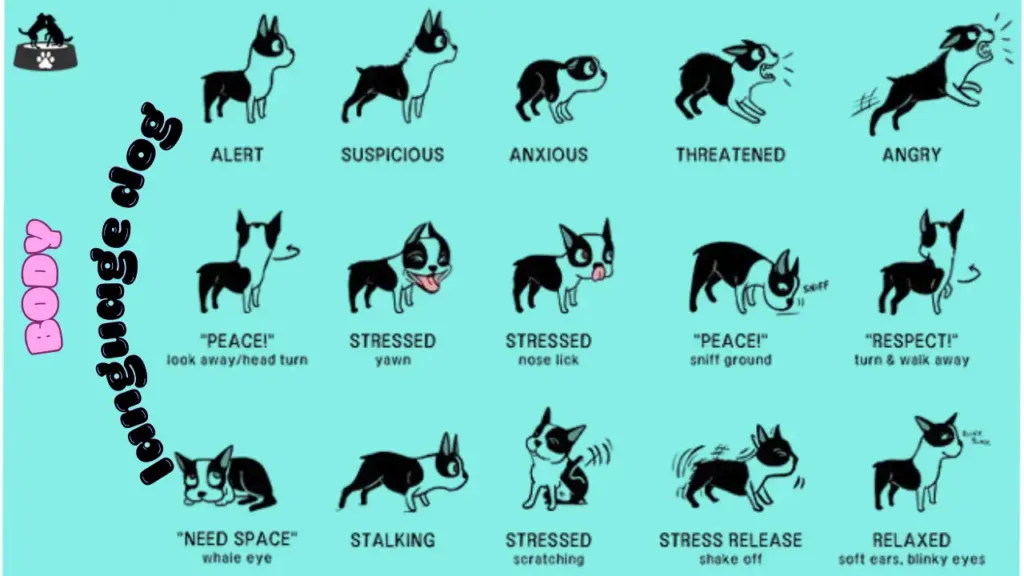Introducing a dog to a toddler or having a toddler in a home with an existing dog can be a wonderful experience, but it also brings a unique set of challenges and concerns. Ensuring the safety of both your child and your furry friend is paramount, and it can often test your sanity!
This article will provide realistic and practical strategies to help you navigate this tricky but rewarding phase, offering advice on how to create a harmonious and safe environment for all. From setting boundaries to understanding dog body language, you’ll be equipped with the knowledge to handle common issues and promote a positive relationship between your toddler and your dog.
Autres questions
- How to keep a toddler safe around dogs?
- How to teach toddlers about safety?
- What are 3 ways to keep toddlers safe?
- How do you teach a child to be safe around dogs?

Understanding the Dynamics: Toddler vs. Dog Behavior
To effectively manage the relationship between your toddler and your dog, it’s essential to understand the typical behaviors and needs of both.
Toddler Behavior
Toddlers are curious explorers, and their world is full of wonder and discovery. They are learning about their environment and how to interact with it. This often involves touching, tasting, and grabbing anything within reach. They are also learning about personal boundaries and social cues, but their understanding is still developing.
Key points to remember about toddler behavior:
- – Curiosity and exploration: Toddlers love to investigate their surroundings, often without regard for potential dangers.
- – Lack of understanding: They may not comprehend the concept of personal space or that certain actions, like pulling a dog’s tail, can cause pain or trigger an aggressive response.
- – Limited communication skills: While their vocabulary is growing, toddlers may not yet be able to express themselves clearly, which can lead to frustration.
- – Need for supervision: Toddlers require constant supervision due to their impulsive behavior and lack of danger awareness.
Dog Behavior
Dogs, on the other hand, have their own set of instincts and behaviors that can sometimes clash with a toddler’s curious nature.
Key points about dog behavior:
- – Body language: Dogs communicate primarily through body language, including tail position, ear posture, and facial expressions. Understanding these cues is vital to interpreting their emotional state and intent.
- – Predatory instincts: Some dogs may view a running toddler as prey, especially if they exhibit quick movements and high-pitched noises.
- – Resource guarding: Dogs can be protective of their food, toys, or sleeping areas, which could lead to aggression if they feel threatened.
- – Individual personalities: Just like humans, dogs have unique personalities. Some may be more patient and tolerant, while others are easily startled or anxious.
Strategies for a Safe and Sane Home
Now that we’ve explored the behaviors of toddlers and dogs, let’s dive into practical strategies to ensure their safety and your peace of mind:
1. Supervise, Supervise, Supervise
The number one rule when it comes to toddlers and dogs is never to leave them unattended together. Even the most patient dog has its limits, and a toddler’s unpredictable behavior could unintentionally provoke a negative reaction. Always keep a close eye on their interactions, and if you need to step away, separate them with a baby gate or a crate for the dog.
2. Teach Gentle Interactions
Toddlers need to learn how to interact with dogs gently and respectfully. Show them how to pet the dog softly, always under your supervision. Teach them to offer the back of their hand for the dog to sniff first, rather than going straight for a pat. Explain that they should never pull tails, ears, or fur, and that it’s important to be calm and gentle.
3. Set Clear Boundaries
Establish rules and boundaries for both your toddler and your dog, and be consistent in enforcing them. For example, teach your toddler that the dog’s bed, crate, or certain rooms are off-limits. Similarly, train your dog to respect the toddler’s personal space, such as not jumping up or stealing food from their hands.
4. Understand Dog Body Language

Learn to recognize the signs of stress or discomfort in your dog. A dog that feels threatened may display subtle cues before escalating to aggression. Common signs include yawning, lip licking, turning their head away, or a stiff body posture. If you notice these signals, separate the dog from the toddler calmly and give them a safe space to relax.

5. Provide Adequate Exercise and Mental Stimulation
A tired dog is a happy dog, and the same can often be said for toddlers! Ensure your dog gets enough exercise and mental stimulation to help them stay calm and relaxed. This will also reduce the likelihood of them becoming overexcited or frustrated when your toddler wants to play.
6. Manage Mealtimes and Treats
Toddlers love to share, but mealtimes and treats can be a source of tension between them and your dog. Always keep your dog away from your toddler during mealtimes, and teach your child not to offer food from their hands. Use treat balls or puzzle feeders for your dog to prevent them from begging at the toddler’s mealtime.
7. Offer Alternative Chews and Toys
Provide your dog with appropriate chews and toys to redirect their attention. This is especially important during times when your toddler is playing nearby, as it gives the dog an acceptable outlet for their chewing or playful instincts.
8. Be Prepared for Noise
Toddlers can be loud, and some dogs may find this overwhelming or triggering. If your dog is sensitive to noise, create a safe space for them away from the main play area, and use white noise or calming music to help mask the sounds of toddler playtime.
9. Practice Good Hygiene
Teach your toddler the importance of washing their hands after playing with the dog, and always supervise any interactions that involve the dog’s toys or chews to prevent the transfer of germs.
10. Stay Calm and Consistent
Your reaction to any situation involving your toddler and dog sets the tone for their relationship. Stay calm, patient, and consistent in your approach. If you become flustered or frustrated, both your toddler and your dog will sense this, potentially making the situation worse.
Conclusion:
By implementing these strategies, you’ll be well on your way to creating a safe and harmonious environment for your toddler and dog to coexist. It’s important to remember that every family is unique, so adapt these tips to suit your specific needs and circumstances. With patience, consistency, and a good dose of supervision, you can nurture a beautiful friendship between your toddler and your furry companion, all while maintaining your sanity!
This article has provided a realistic and practical guide to help you navigate the challenges of introducing a toddler to a dog, or managing their relationship in the same household. Now you can confidently ensure the safety and well-being of both, creating wonderful memories along the way.
